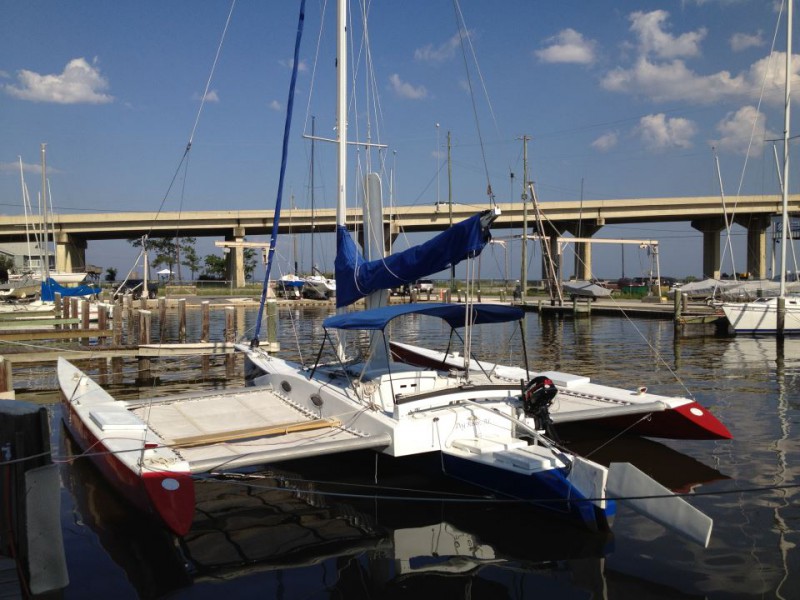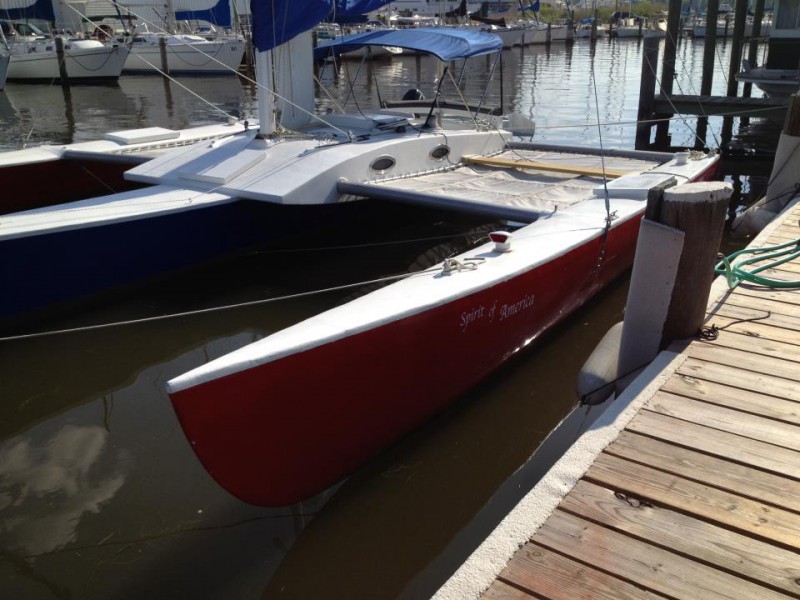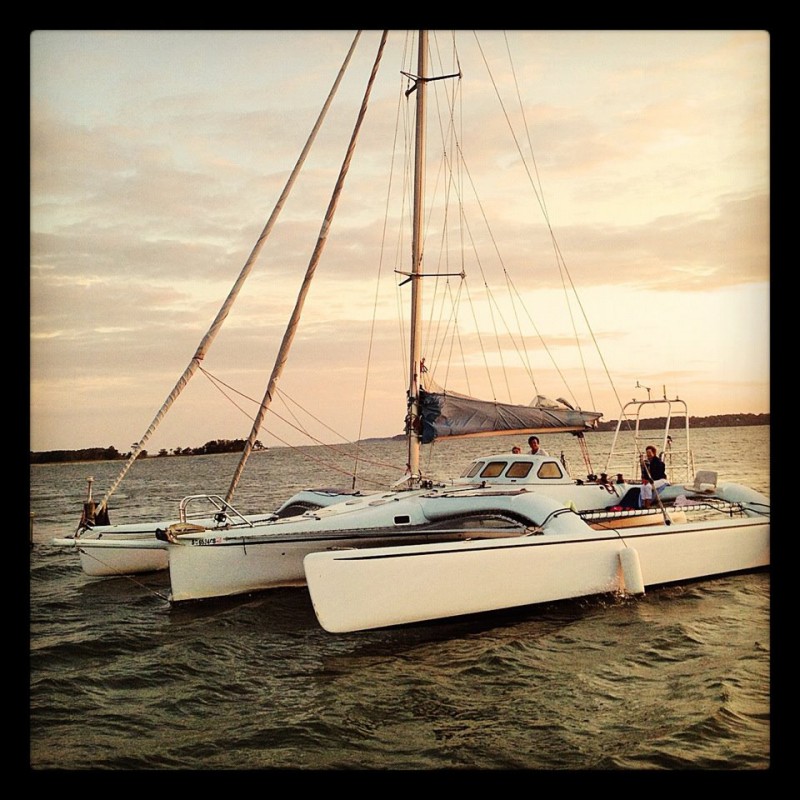Am back through about half of the 200 that were waiting. It moves along.
Monthly Archives: May 2012
Original Tomcat 30
I just got some pictures of a version 2 I think it was, Tomcat 30 trimaran from the owner, Robert Wakeman. This was the design that first got me into Multihulls Magazine. The idea was to be the fastest 30′ multi possible that would meet offshore racing rules. Back then none of the multis I saw thought about headstay tension and pointing. This design did. Not much I would change now some 30 years later. It had big board, big amas way out there. Rotating fractional rig. Now I would round the sheers more. Add a squaretop main. A little more fullness in the hull sections. Lighter hatches.
A pretty cool boat. See http://
Server was Down Again
Sorry. It turns out the email server was down again from 2 pm yesterday to about 8 am today. They claim it will never happen again. If you were sending email and it bounced, hit it again please. I have been staying with Drizzle because the tech guy, Jesus, is so good.
Other note, I got the catalog proof and found 2 mistakes. Taking updated PDF back to printers right now. The new books will be ready next week. It is an awesome book.
Pat’s Tri
Server Down Today
It seems the server is down today. Both email and website are not working for several hours now. This is second time this month and third time in just over a month. Sorry. I may need to find a new one.
KSS
As far as I know Kelsall and I are the only multihull designers who are actively pushing the envelope on rapid hull construction. I have commended him for working the problem so actively. And I have criticized him in the past for ignoring global loads (he did then revise his half length panel method) and for advocating polyester resin. He does seem to mistrust materials testing and composite engineering, which is fine.
His claims of 5 hours to build a full length bagging table and KSS being “perfect, with no downsides” made me very skeptical. Especially after KSS keeps changing. Evolution is good. I do expect him to discover CM in composites soon and declare he invented it.
I have heard about KSS panels splitting open during fold-up but I was interested and surprised when I got this firsthand note from Don while I was overseas. With permission…
“I hosted his first workshop on the East Coast of the US, about 10 years ago. I can tell you it took me longer than 5 hours to build the 32′ mold table, with a continuous sheet formica 32′, without any joints. Derek arrived with 2 sheets of paper one was a sketch of the 30′ cat and the second sheet was metric offsets. I spent a week with the man 12 to 16 hours a day and I can say he held all information close to-the-vest. I spent $7,000.00 on materials. We had 12 persons at the workshop, he charged $350 or $400 per person. I provided 3 meals a day for everyone. Derek walked away with $2,800.00. I did charge him the cost of the bulk food. We ended up with 4 panels, one for each side of the 2 hulls. After all that he never provided any additional plans and I dropped the project. The table did provide very flat panels. We had trouble with the gel coat. There were sections that looked like wood with worm channels. I had a large barn that was built in 1860, the boards on the side walls, had gaps that were a 1/4″ to 1/2″ between boards. It was summer time in Pennsylvania but it would cool off by 10:00 PM. The gel coat was applied at nite. That, cool air coming through the cracks, may have caused the gel coat problem, the mold table was 3′ to 4′ from the wall. None of the 12 persons purchased plans from Derek.”
Ackerman Tiller Geometry
Every body must know by now that Latitude 38 is the best sailing magazine there is. Got this link from Randy on steamradio about catamarans and that geometry. Its a few pages down.
http://www.latitude38.com/eBooks/2012/L38201205-2.pdf
Bootleg Sunchaser 58
I just missed a chance to do the USCG certification on the bootleg Sunchaser 58 catamaran Brass Ring. As I was out of town, it saved me from confronting the dilemma.
John Shaw, again. Built 2002 I was told.
J. R. Watson
I did stumble onto an old IBEX paper by JR on In-Field Repairs. Good one. I will find out if he has has a link or a word file of it.
One gem. Wet epoxy spills will fluoresce just like body fluids. Who knew. Grab that blacklight from behind the In-A-Gadda-Da-Vida album…
Design Book Status
I expect to get the proofs tomorrow. I do need to look as there have been so many changes. And wow have they gone up in printing cost! They do remind me that there are so many new pages….


